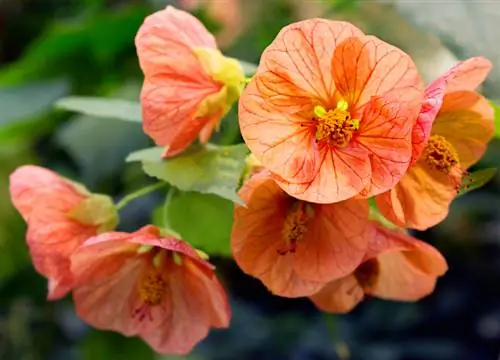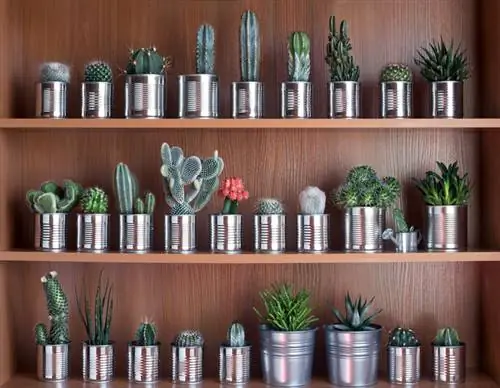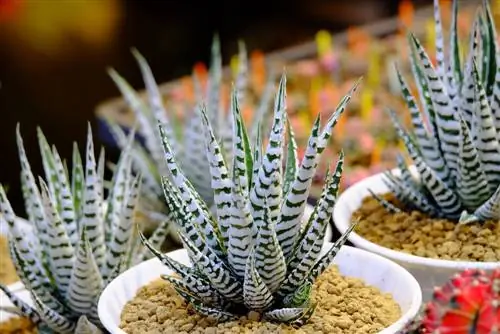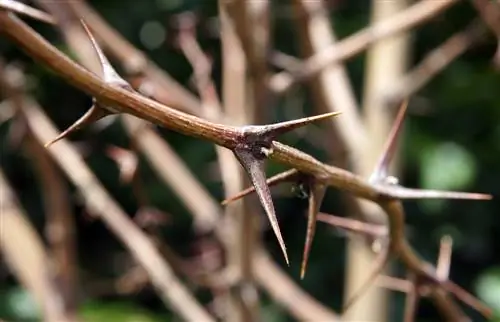- Author admin [email protected].
- Public 2023-12-16 16:46.
- Last modified 2025-06-01 06:02.
We associate cacti with thorny desert plants with bizarre growth forms. It is often overlooked that there are actually cacti without spines to be discovered. Get to know some of the most beautiful species here. Our tips on care show the differences to their prickly counterparts.
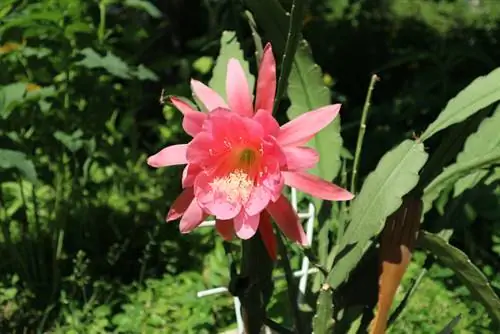
Which types of cactus have no spines?
Cacti without spines are often found in South American rainforests and have delicate bristles instead of thorns. Examples include Christmas cactus (Schlumberga), Easter cactus (Hatiora), cobbler cactus (Disocactus ackermannii), hanging leaf cactus (Epiphyllum) and mistletoe cactus (Rhipsalis).
Types of cacti without spines - an overview
At the beginning of their evolution, cacti had no thorns. Over the course of millions of years, desert cacti were forced to adapt to dry, hot climate conditions. To do this, they learned to store water in leaves, shoots and trunks. In addition, they rolled their leaves into thorns to reduce evaporation.
Cacti in the South American rainforests, however, were not forced to take these measures. The following species and varieties still thrive as leaf cacti and only have delicate bristles instead of thorns:
- Christmas cacti (Schlumberga)
- Easter cacti (Hatiora - until recently Rhipsalidopsis)
- Cobbler cactus (Disocactus ackermannii)
- Hanging leaf cactus (Epiphyllum)
- Mistletoe cactus, cane cactus (Rhipsalis)
Like many rainforest plants, leaf cacti thrive epiphytically in their homeland, high up on the branches of majestic jungle giants. Numerous wild species develop their flowers, up to 30 cm in size, at night. Well-known varieties, on the other hand, delight us with a long-lasting flowering period during the day, such as the 'German Empress' (Disocactus phyllanthoides).
Bright sun undesirable - tips for the ideal location
Native to the rain and mountain forests of South America, cacti without spines place different demands on the location than their thorny colleagues from the desert. Leaf cacti want a partially shaded spot on an east or west window where they cannot come under direct sunlight at midday. In addition, increased humidity of 60 to 70 percent is beneficial.
How to properly care for leaf cacti
While you can even plant desert cacti in sand, cacti without spines thrive in a nutrient-rich, loose and slightly acidic substrate. Rhododendron soil is well suited for this purpose and can be optimized with Seramis, lava granules or fine-grained pine bark substrate. The following measures are important in the care program:
- Water with lime-free water when the substrate surface has dried
- Spray the entire plant with soft water every 1 to 2 days
- From March to September, fertilize liquidly every 14 days with a special fertilizer for leaf cacti
Since leaf cacti do not thrive as succulents, pruning is possible at any time without any problems. Shorten shoots that are too long with sharp, disinfected scissors. The best time to prune is at the end of winter dormancy.
Tip
Although cacti with and without spines differ significantly in their care requirements, they pull together when it comes to winter rest. In order for the exotic plants to lay their buds, a cool period of rest is essential - with a few exceptions. From October/November to February/March, the extravagant beauties stay in a bright location at temperatures around 10 degrees Celsius.



